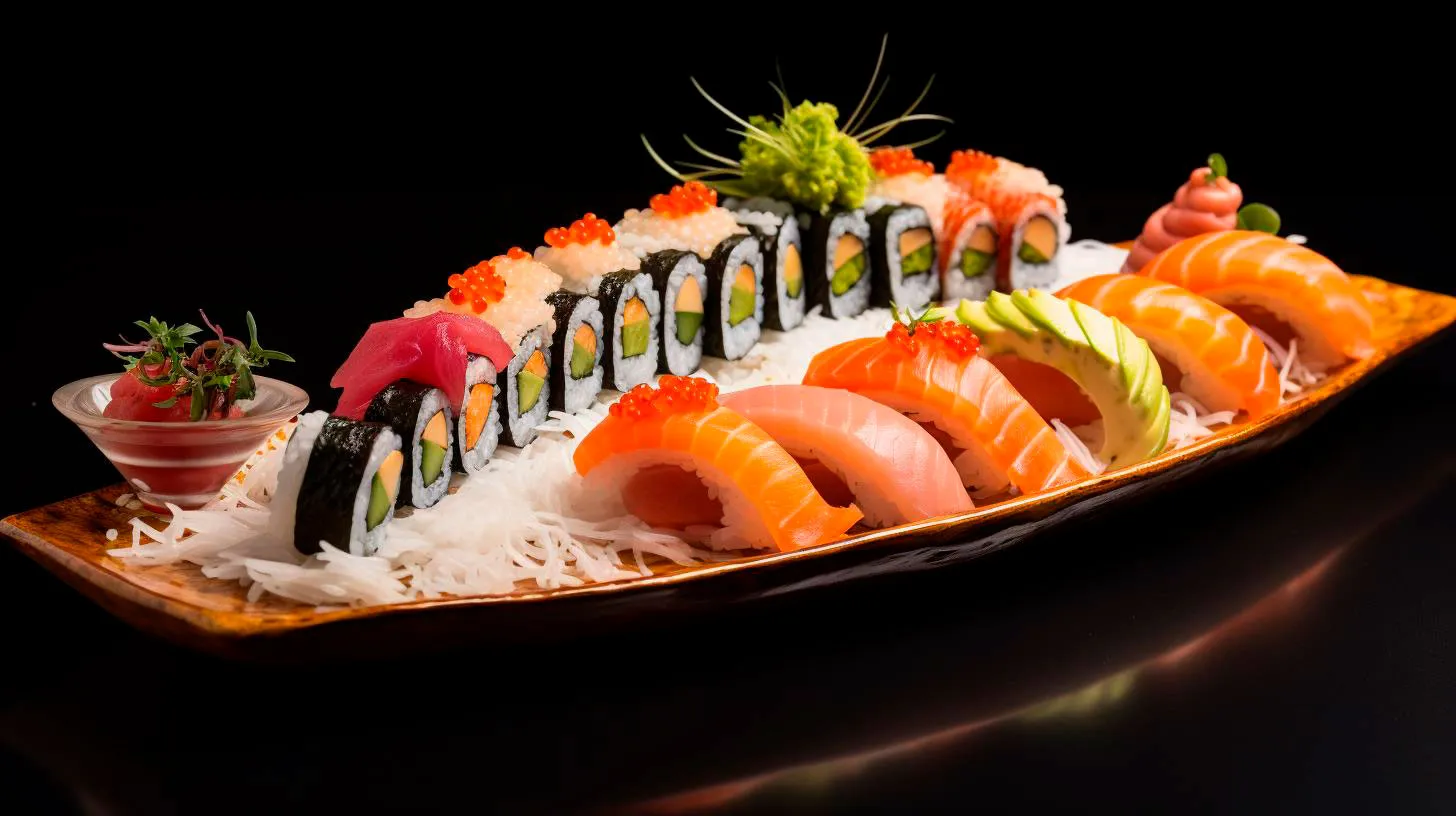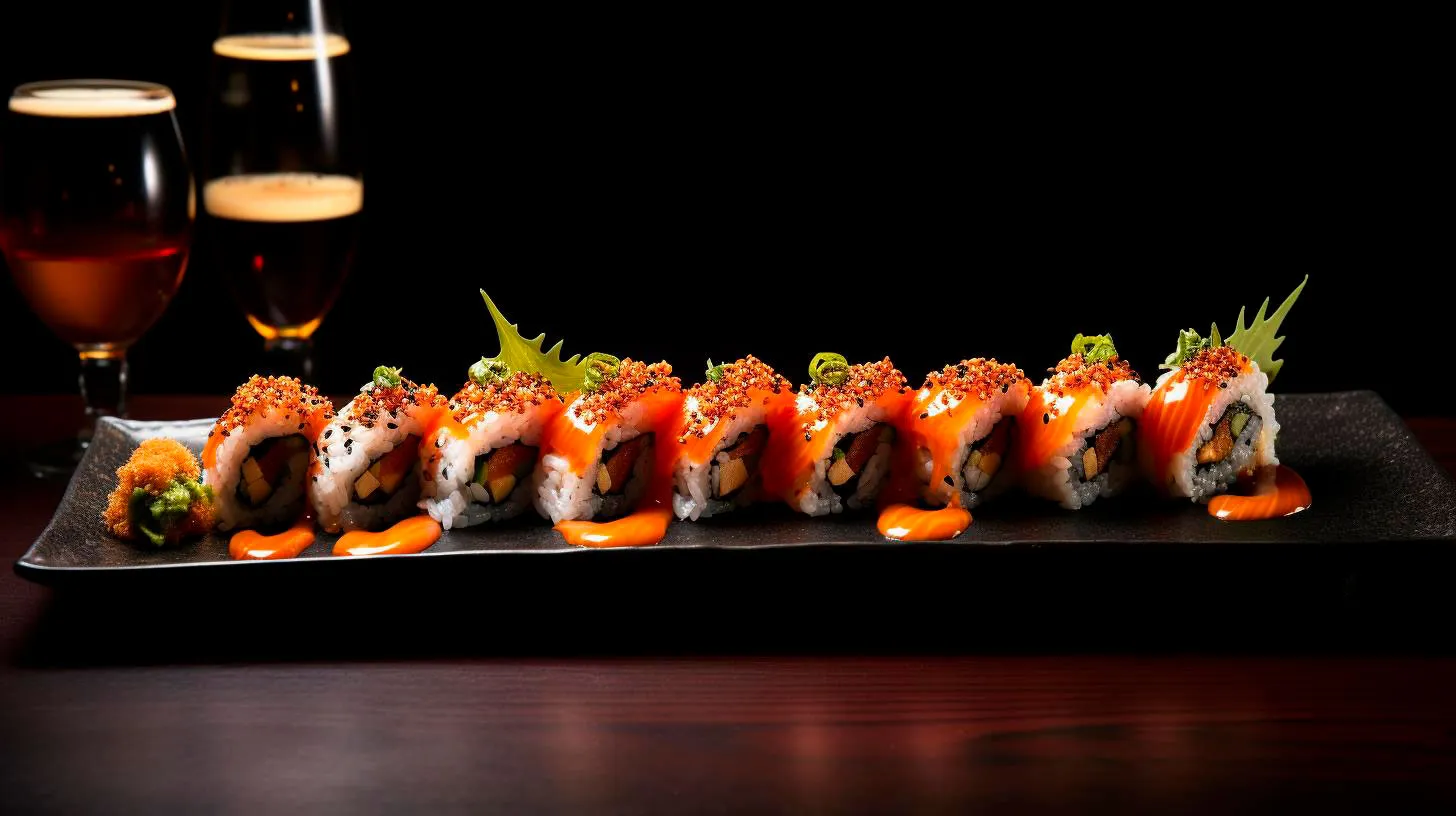Why Proper Washing Techniques are Crucial for Sushi Rice
Sushi rice, known as “shari,” is the foundation of any excellent sushi dish. The texture, stickiness, and quality of the rice play a pivotal role in how the overall sushi experience turns out. In order to achieve the desired sushi rice texture, proper washing techniques are vital. In this article, we will explore the importance of washing sushi rice, the impact it has on the final taste, texture, and presentation of sushi, and how to wash sushi rice correctly.
The Importance of Washing Sushi Rice
Washing sushi rice may seem like a mundane step, but it serves several essential purposes in the sushi-making process. Properly washed rice can significantly enhance the flavor and texture of sushi, resulting in a more enjoyable and authentic dining experience. Here’s why washing sushi rice is crucial:
- Removes Excess Starch: Sushi rice contains a high percentage of starch, and if left unwashed, it can make the rice sticky and clumpy. By rinsing the rice, you remove excess starch, allowing the grains to cook more evenly and ensuring a light and fluffy texture.
- Eliminates Unwanted Odor: Washing sushi rice helps remove any impurities, dust, or residual bran from the grains. This aids in eliminating unwanted odors and ensuring a clean, refreshing aroma in the final sushi dish.
- Enhances Taste: Removing excess starch and impurities not only results in better texture but also improves the overall taste of the sushi. Proper washing ensures that the rice does not taste overly starchy or bland, allowing the flavors of other sushi ingredients to shine.
- Prevents Clumping: When sushi rice is not washed adequately, it tends to clump together, making it challenging to work with during the sushi rolling process. Washing rice ensures that each grain remains separate, allowing for easier handling and more aesthetically pleasing sushi rolls.
Proper Techniques for Washing Sushi Rice
Now that we understand why washing sushi rice is crucial, let’s dive into the proper techniques to achieve the best results.
Step 1: Measure and Rinse
Start by measuring the desired amount of sushi rice using a measuring cup. Rinse it several times under cold running water in a strainer or colander. Gently stir the rice with your fingers while rinsing to ensure all grains get washed evenly.
Step 2: Soak
After rinsing, transfer the rice to a bowl and fill it with clean water. Let the rice soak for about 30 minutes to allow the grains to absorb water, resulting in better texture and flavor.
Step 3: Drain and Repeat
Drain the soaked rice and rinse it once again under cold water to remove any remaining impurities. Repeat this process until the water runs clear, indicating that the rice is sufficiently clean.
Step 4: Final Drain
After the last rinse, let the rice drain for about 15 minutes. This helps remove excess water, allowing the rice to cook evenly and preventing it from becoming overly mushy.
Step 5: Cooking Sushi Rice
Now that your sushi rice is clean and ready, follow your preferred cooking method. Typically, sushi rice is cooked in a rice cooker or a pot on the stovetop. Remember to follow the instructions on the rice packaging for optimal results.
Key Takeaways
Properly washing sushi rice is a crucial step in achieving delicious and authentic sushi. By understanding the importance of washing sushi rice and following the correct techniques, you can elevate your sushi-making skills. Here are the key takeaways:
- Washing sushi rice removes excess starch, eliminates unwanted odor, enhances taste, and prevents clumping.
- Proper techniques involve rinsing the rice multiple times under cold water, soaking it, and repeating the process until the water runs clear.
- Well-washed sushi rice results in light, fluffy, and flavorful rice that enhances the overall sushi dining experience.
Remember, each element of sushi contributes to the final masterpiece, and the rice is no exception. So the next time you embark on a sushi-making adventure, don’t overlook the importance of washing the rice. Your taste buds will thank you!
Expert Tips for Achieving Perfectly Washed Sushi Rice
In this article, we will share expert tips on how to achieve the best results when washing sushi rice.
Why Washing Sushi Rice Matters
Washing sushi rice is a vital step that should never be overlooked. The washing process removes excess starch from the grains, resulting in fluffy and perfectly cooked rice. It also helps to remove any impurities that can affect the taste and appearance of the final dish. Perfectly washed sushi rice will enhance the overall dining experience and elevate the flavors of your sushi rolls.
Expert Tips for Washing Sushi Rice
1. Choose the Right Rice
When it comes to sushi rice, not all grains are created equal. Choose short-grain Japanese rice known for its high starch content, which contributes to the stickiness necessary for sushi. Brands like Koshihikari and Calrose are popular choices among sushi enthusiasts.
2. Measure Properly
Accurate measurements are crucial for achieving perfectly cooked sushi rice. Use a measuring cup to ensure you have the correct rice-to-water ratio. A general guideline is to use one cup of rice to one and a quarter cups of water. Adjust the water quantity slightly based on your desired rice consistency.
3. Rinse Thoroughly
Rinsing sushi rice is a critical step in removing excess starch and impurities. Use cold water and gently wash the rice in a circular motion to avoid damaging the grains. Repeat this process until the water runs clear. Some experts recommend rinsing the rice up to seven times.
4. Soak the Rice
Once the rice is thoroughly rinsed, let it soak in water for approximately 30 minutes before cooking. This step helps the rice absorb moisture evenly, resulting in even cooking and improved texture.
5. Use a Colander or Fine-Mesh Strainer
When draining the rice after soaking, use a colander or fine-mesh strainer to remove excess water. Allow the rice to drain for a few minutes, as excessive moisture can affect the cooking process and result in sticky or mushy rice.
6. Be Gentle When Handling the Rice
When transferring the rinsed and soaked rice to the cooking pot, be gentle to avoid damaging the grains and altering the final texture. Use a wooden spatula or rice paddle to prevent excessive stirring, which can make the rice too sticky.
7. Cook to Perfection
When cooking sushi rice, precision is key. Follow the instructions on the rice package or refer to trusted recipes to determine the optimal cooking time. While cooking, make sure to keep the lid on the pot to seal in the steam and maintain the right moisture level.
Key Takeaways
- Washing sushi rice is essential for achieving the perfect texture and flavor.
- Choose short-grain Japanese rice known for its high starch content.
- Accurate measurements for rice and water ratios are crucial.
- Rinse the rice thoroughly to remove excess starch and impurities.
- Soak the rice before cooking to ensure even moisture absorption.
- Use a colander or fine-mesh strainer to drain excess water.
- Handle the rice with care to avoid damaging the grains.
- Cook the rice precisely for optimal results.
Mastering the art of washing sushi rice is a significant step towards perfecting your sushi-making skills. By following these expert tips, you can achieve a delicately flavored, perfectly textured sushi rice that will impress your guests and elevate your sushi creations.
Mistakes to Avoid When Washing Sushi Rice
In this article, we’ll dive into some common mistakes to avoid when washing sushi rice to ensure you achieve the ideal texture and flavor every time you prepare sushi at home or in a restaurant.
Importance of Washing Sushi Rice
Washing sushi rice might seem like a simple task, but it shouldn’t be underestimated. Properly washing the rice is essential for several reasons:
- Removal of excess starch: Sushi rice contains a high amount of starch, which can make the grains stick together. Washing the rice helps remove this excess starch, ensuring that your sushi rice doesn’t become clumpy or sticky.
- Enhanced texture: Washing sushi rice helps create light, fluffy, and individual grains. This texture is crucial for sushi, as it allows each grain to absorb the flavors of soy sauce, wasabi, or the toppings you choose for your rolls.
- Improved taste: By washing sushi rice, you eliminate any residual impurities, resulting in a cleaner taste and allowing the subtle flavors of the rice to shine through.
Mistakes to Avoid
1. Insufficient Washing
One of the most common mistakes when washing sushi rice is not rinsing it enough. Inadequate rinsing leaves behind excessive starch, which can result in rice that is too sticky or heavy. To ensure fluffy and light sushi rice, thoroughly rinse the grains until the water runs clear.
2. Rough Handling
Be gentle when washing sushi rice. Avoid vigorous stirring or swirling the rice. Instead, use a gentle swishing motion with your hands to remove dirt and impurities. Excessive handling can damage the grains and lead to undesirable results.
3. Skipping the Soaking Step
Soaking sushi rice is an essential step that brings out its natural sweetness and helps achieve the perfect texture. The grains absorb water during soaking, resulting in better cooking and a fluffy end product. Don’t rush this step; give the rice around 30 minutes to soak before cooking.
4. Incorrect Water-to-Rice Ratio
Adding the correct amount of water is crucial for properly cooked sushi rice. A common mistake is using too much water, resulting in rice that is mushy or overcooked. Follow the recommended ratio of 1.1 to 1.2 parts water for every part of sushi rice to ensure optimal results.
5. Not Allowing Rice to Rest
After cooking sushi rice, it’s essential to let it rest for about 10 minutes before using it. This resting period helps the grains settle and achieve an ideal texture. Avoid the temptation to rush the process, as it can affect the taste and consistency of your sushi rice.
Key Takeaways
Preparing sushi rice is a critical step in creating exceptional sushi. By avoiding these common mistakes, you can ensure that your sushi rice turns out perfect each time:
- Thoroughly rinse sushi rice to remove excess starch and achieve light, fluffy grains.
- Handle the rice gently to avoid damaging the grains.
- Soak the sushi rice for around 30 minutes to enhance its sweetness and texture.
- Follow the recommended water-to-rice ratio to avoid overcooking or making the rice mushy.
- Allow the cooked rice to rest for about 10 minutes before using it in sushi preparation.
Remember, sushi rice is the backbone of any delicious sushi creation. By mastering the art of washing sushi rice, you’re well on your way to preparing mouthwatering sushi at home. So grab your rice, start washing, and enjoy the wonderful world of homemade sushi!
Step-by-Step Guide: How to Wash Sushi Rice Correctly
So, let’s dig in and discover the step-by-step process to achieve perfectly washed sushi rice!
Importance of Washing Sushi Rice
Before we embark on our journey of mastering this technique, let’s understand the significance of washing sushi rice properly. Washing sushi rice serves multiple purposes:
- Removal of Excess Starch: Washing helps remove the residual starch from the rice grains, giving the sushi rice a fluffy and non-sticky texture.
- Enhanced Taste: Properly washed rice ensures that each grain is infused with flavors when it combines with sushi vinegar.
- Improved Presentation: Washing sushi rice correctly results in individual rice grains that stick together just enough to form perfectly shaped sushi.
Step-by-Step Guide
Step 1: Measure the Rice
Begin by measuring the desired amount of sushi rice using a standard measuring cup. One cup of uncooked rice generally yields three cups of cooked rice. Adjust the quantity as per your requirements.
Step 2: Rinse the Rice
Place the measured rice in a large bowl and fill it with cold water. Gently swirl the rice with your hand to release any impurities. Continue rinsing until the water becomes cloudy. Drain the rice using a fine-mesh sieve or colander.
Step 3: Repeat the Process
Now, for the second round of rinsing, fill the bowl with water again and repeat the swirling process. This second rinse will ensure a cleaner and whiter appearance of the rice grains. Drain the rice once again.
Step 4: Let It Rest
Allow the rinsed rice to rest for about 30 minutes. This resting period helps the rice grains absorb moisture and ensures even cooking.
Step 5: Cook the Rice
Transfer the rice to a rice cooker or a saucepan. Add the appropriate amount of water following the recommended rice-to-water ratio. Cook the rice according to the instructions provided with your rice cooker or cook it on the stovetop until it reaches the desired consistency.
Key Takeaways
By following this step-by-step guide, you are now equipped with the knowledge needed to wash your sushi rice correctly. Let’s summarize the key takeaways:
- Washing sushi rice removes excess starch, resulting in a fluffy texture.
- The process enhances the taste and presentation of sushi.
- Measuring the rice accurately is crucial.
- Rinse the rice twice to achieve optimal cleanliness.
- Allow the rinsed rice to rest before cooking.
With these essential steps, you are ready to create delicious sushi at home and impress your friends and family with your newfound expertise!
Remember, mastering sushi rice preparation is just the beginning. So, stay connected with our Tech Blog for more exciting articles on culinary tips, kitchen gadgets, and everything else to enhance your cooking experiences. Happy sushi-making!



